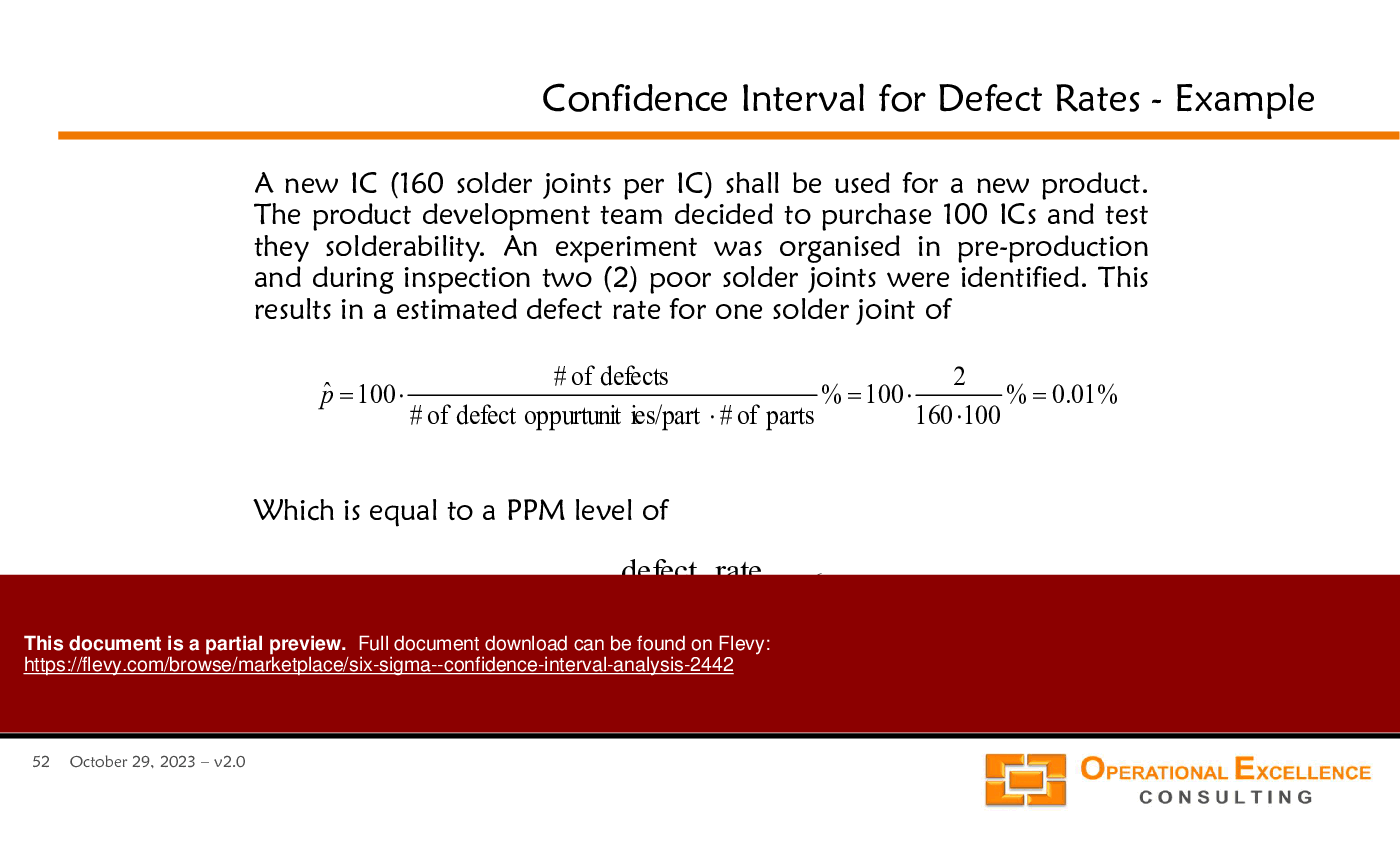Confidence Interval Analysis for Standard Deviation Comparison PPT
This PPT slide, part of the 72-slide Six Sigma - Confidence Interval Analysis PowerPoint presentation, presents a theoretical framework for comparing 2 standard deviations through the use of ratios. It introduces the concept of estimating the ratio of true standard deviations, denoted as ?true, by comparing 2 estimated standard deviations, s_estim1 and s_estim2. The slide emphasizes the importance of establishing a confidence interval for this ratio, which is critical for statistical analysis.
The mathematical representation of the confidence interval is provided, indicating that ?true lies between 2 bounds defined by the estimated standard deviations and constants F1 and F2. These constants are influenced by the risk level (?) and the sample sizes (n1 and n2) of the observations. The slide suggests that these constants can be calculated using the Excel function "FINV," which is a practical approach for those familiar with Excel tools.
A key question posed is whether there is sufficient evidence to determine if ?true is not equal to 1. This is significant because if ?true equals 1, it implies that the standard deviations of the 2 processes being compared are statistically similar. The slide concludes by stating that if the calculated ratio does not fall within the 95% confidence interval, one can assert with 95% confidence that the standard deviations are indeed different. This insight is particularly valuable for decision-makers who need to understand the statistical significance of variations in processes or products.
This slide is part of the Six Sigma - Confidence Interval Analysis PowerPoint presentation.
Developed by a Senior Executive and Operational Excellence Coach with experience at organizations including NOKIA, MICROVENTION, and MAGELLAN, this presentation covers Confidence Interval Analysis using an included Excel Application.
EXPLORE MORE SLIDES FROM THIS PRESENTATION
EXPLORE MORE PRESENTATIONS ON
Flevy is the world's largest knowledge base of best practices.
![]()
Leverage the Experience of Experts.
Find documents of the same caliber as those used by top-tier consulting firms, like McKinsey, BCG, Bain, Deloitte, Accenture.
![]()
Download Immediately and Use.
Our PowerPoint presentations, Excel workbooks, and Word documents are completely customizable, including rebrandable.
![]()
Save Time, Effort, and Money.
Save yourself and your employees countless hours. Use that time to work on more value-added and fulfilling activities.

